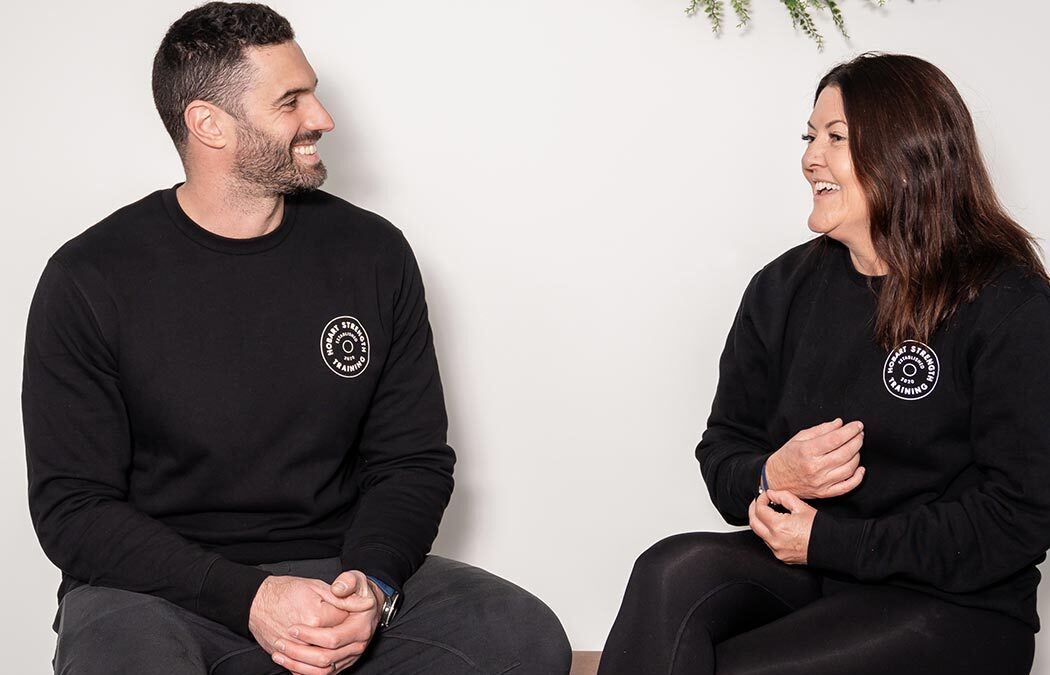Have you ever been told to sit up straight? Or warned about the dangers of “text neck”? Maybe you’ve heard of “power posing” from Amy Cuddy’s TED Talk. While we’re not experts in social psychology, we help people get healthier and Stronger For Life. At Hobart Strength Training, we believe you don’t need to micromanage posture. The idea of perfect posture is a myth. Posture is context-specific and depends on the task. Would a cyclist sit upright during a race? Do you lean forward when listening? Ever shift your weight while cooking to feel comfortable? These are natural, useful postures. Instead of chasing perfect alignment, aim to move often and vary your position. Usually, staying still too long—not position itself—causes discomfort. In this article, we’ll explore what posture really means, whether exercise helps, and when it might matter. The goal isn’t perfect postures—it’s stronger movement through life.
What does posture really mean?
Many people believe sitting and lifting with a straight or slightly curved back protects the spine. This idea comes from concerns about low back pain linked to bending or heavy lifting. Fitness advice often tells us to “activate the core” to keep a “correct” posture, even outside the gym. However, research shows no strong proof that one posture prevents pain or injury¹. In fact, people with back pain often move cautiously, which may increase fear and discomfort. Postures also carry social weight. Society links someone’s stance to respect, attractiveness, and even morality. Media messages and posture-correction products make people worry unnecessarily. So, posture is more than just how we hold our bodies—it’s shaped by culture, beliefs, and social expectations, not just biology. Even our experts aren’t certain. Physiotherapists show significant disagreement on the optimal sitting positions for low back pain, reflecting varied beliefs and highlighting posture’s complex, individualized nature².
What can exercise do for your posture?
“Good posture” is often seen as upright, symmetrical, and still. Of course, we’re now aware that science doesn’t support this view. Instead of chasing perfect alignment, we should focus more on how long we stay in one position. Research shows that staying still—no matter the position—can lead to discomfort. Movement matters more. Changing positions often helps prevent discomfort, especially in the lower back³. Exercise plays a key role here. It reduces time spent in static postures, builds strength, and improves body awareness. For some people, like those with spinal stenosis, moving into spinal flexion (rounded positions) can actually be therapeutic! As a society we don’t need to “fix” their posture. Instead, we need to move our bodies more and build trust in them. Exercise helps with that. Exercise helps individuals build strength across a variety of positions (or, postures) and breaks up periods of being still.
So, should you worry about your posture?
You don’t need to chase perfect posture. Instead, focus on moving often, and with confidence. At Hobart Strength Training, we help you build strength across a variety of postures—not to “fix” you, but to help you move more freely and feel better in your body. Whether you’re sitting, standing, lifting, or recovering from pain, our goal is to make you Stronger For Life. We’ll guide you through exercises that build awareness, resilience, and trust in your movement. If you’ve been told to “sit up straight” or “stop slouching,” it’s time to reframe that advice. You don’t need ideal posture—you need strong, adaptable movement. Let’s train for that together.

